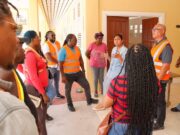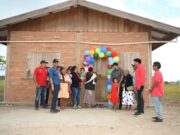At the launch of APNU’s 2025 campaign at the Square of the Revolution, Opposition Leader Aubrey Norton made a reckless assertion that maternal deaths in Guyana are on the rise.
This is according to the Ministry of Health.
This claim, made on a national platform, is factually wrong and dangerously out of touch with the significant strides Guyana has made in maternal and neonatal health under the current government.
The Ministry of Health’s most recent data paints a very different picture.
Maternal deaths due to postpartum haemorrhage dropped from 23 cases in 2019 to just 14 in 2024.
Neonatal deaths saw a 60% reduction in the first nine months of 2024, falling from 68 to 28 when compared to the same period in 2023.
These figures are the product of systemic reforms, not chance.
Globally, nearly 300,000 women die every year due to complications from pregnancy or childbirth, according to the World Health Organisation. Yet while four out of five countries in the region are currently off track to meet the 2030 Sustainable Development Goals for maternal survival. Guyana is moving to achieve these goals.
This progress is the direct result of strong leadership, targeted investment, and sound healthcare policy under the PPP/C Administration.

Minister of Health Dr Frank Anthony has credited the improvements to a range of government-led initiatives. Among them:
- The establishment of Neonatal Intensive Care Units (NICUs) in nine hospitals across the country, equipped with vital technology such as ventilators, incubators, pulse oximeters, and heart monitors.
- The introduction of Maternal Waiting Homes, located within hospital compounds, provides housing for high-risk pregnant women in the hinterland and remote regions. These facilities ensure timely access to care in case of complications and reduce maternal and perinatal risks.
- The implementation of 81 Telemedicine Hubs allows rural health workers to consult in real time with obstetricians and gynaecologists. These links also allow patients to undergo ultrasound diagnostics without leaving their communities.
- The launch of the Newborn Cash Grant, providing $100,000 to every newborn. More than 2,000 families have already benefited from this policy, which eases the financial burden of early childcare and promotes antenatal care participation.

But perhaps most telling of this government’s commitment is the construction of a $12.4 billion Paediatric and Maternal Hospital at Ogle, set for completion in 2025. This state-of-the-art facility will feature:
- 256 beds, covering 24,000 square meters
- Advanced diagnostic tools, including CT scanners, MRI machines, X-ray units, and a modern laboratory
- Functionality as a level-five regional referral centre for maternal and paediatric emergencies
As President Irfaan Ali noted, “This is critical not only to improve care but also to strengthen surveillance, allowing for the timely identification, notification, quantification, and determination of potential causes of maternal deaths.”
Maternal health should never be used as a political prop.
It is about real lives, real families, and a government that has shown, time and again, that it is willing to invest not just in infrastructure, but in systems that empower doctors, protect mothers, and give children a healthy start to life. (Department of Public Information)











